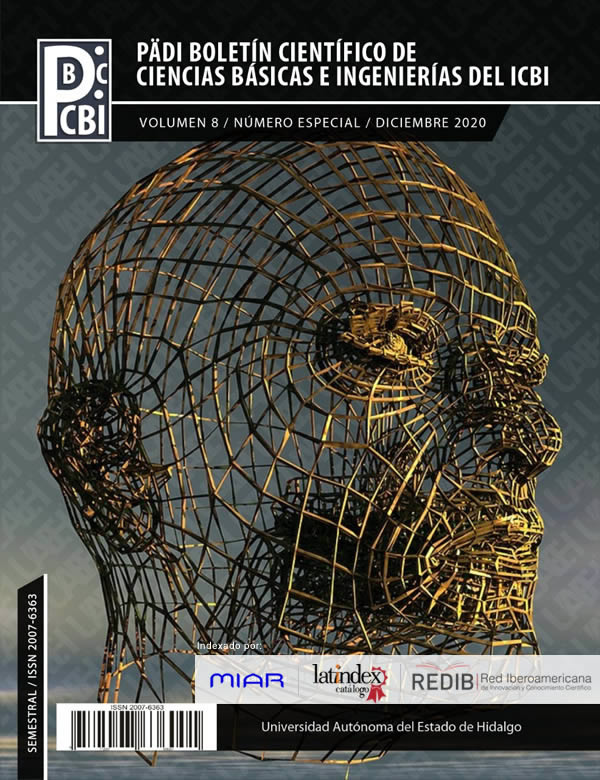The Potential of the Hydroxyapatite as a Thermoluminescent Sensor of Ionizing Radiation
Abstract
The peaceful use of ionizing radiation has spread in all sectors of society, but mainly in the medical area, generating the need to develop systems that accurately measure the energy deposited by radiation. Thermoluminescence is an optical property that certain semiconductor materials exhibit after being exposed to this radiation. One of them is synthetic hydroxyapatite, whose properties are similar to natural, the main constituent of bone tissue. In this work, results of the synthesis, characterization and thermoluminescent response of pure and doped hydroxyapatite synthesized by the conventional hydrothermal method and assisted by microwaves are presented, using as dopants Eu, Dy2O3 and Ag nanoparticles. The results showed that the doped hydroxyapatite has the ability to detect and measure the radiation dose received and that the thermoluminescent response is a function of the method and synthesis conditions, chemical precursors and the kind and concentration of the dopants.
Downloads
References
Abaza, A. (2018). New Trend in Radiation Dosimeters. American Journal of Modern Physics, 7, 21. https://doi.org/10.11648/j.ajmp.20180701.13
Alvarez, R., Rivera, T., Guzman, J., Piña-Barba, M. C., & Azorin, J. (2014). Thermoluminescent characteristics of synthetic hydroxyapatite (SHAp). Applied Radiation and Isotopes, 83(PartC), 192–195. https://doi.org/DOI:101016/japradiso201304011
Andisco, D., Blanco, S., & Buzzi, A. E. (2014). Dosimetría en radiología. Revista Argentina de Radiología, 78, 114–117. https://doi.org/10.1016/j.rard.2014.06.010
Azorín Nieto, J. (2004). Thermoluminescence Dosimetry (TLD) and its Application in Medical Physics. AIP Conference Proceedings, 724(1), 20–27. https://doi.org/10.1063/1.1811814
Barrera-Villatoro, A., Boronat, C., Rivera, T., Correcher, V., Garcia-Guinea, J., & Zárate M, J. (2017). Cathodoluminescence Response of Natural and Synthetic Lanthanide-rich Phosphates (Ln 3+ : Ce, Nd). Radiation Physics and Chemistry, 141. https://doi.org/10.1016/j.radphyschem.2017.07.027
Borbón-Nuñez, H. A., Cruz-Vázquez, C., Bernal, R., Kitis, G., Furetta, C., & Castaño, V. M. (2014). Thermoluminescence properties of sintered ZnO. Optical Materials, 37, 398–403. https://doi.org/https://doi.org/10.1016/j.optmat.2014.06.034
Borchi, E., Furetta, C., Kitis, G., Leroy, C., Sussman, R. S., & Whitehead, A. J. (1996). Assessment of CVD diamond as a thermoluminescence dosemeter material. Radiation Protection Dosimetry, 65(1–4), 291–295. http://inis.iaea.org/search/search.aspx?orig_q=RN:28041186
Bos, A. J. J. (2006). Theory of thermoluminescence. RADIATION MEASUREMENTS, 41, S45–S56. https://doi.org/10.1016/j.radmeas.2007.01.003
Chapman, M. R., Miller, A. G., & Stoebe, T. G. (1979). Thermoluminescence in hydroxyapatite. Medical Physics, 6(6), 494–499. https://doi.org/doi:10.1118/1.594611
Chmielewski, A. G., & Haji-Saeid, M. (2004). Radiation technologies: past, present and future. Radiation Physics and Chemistry, 71(1), 17–21. https://doi.org/https://doi.org/10.1016/j.radphyschem.2004.05.040
CHOPPIN, G. R., LILJENZIN, J.-O., & RYDBERG, J. A. N. (2002). CHAPTER 7 - Radiation Effects on Matter**This chapter has been revised by Prof. T. Eriksen, Royal Institute of Technology, Stockholm (G. R. CHOPPIN, J.-O. LILJENZIN, & J. A. N. B. T.-R. and N. C. (Third E. RYDBERG (eds.); pp. 166–191). Butterworth-Heinemann. https://doi.org/https://doi.org/10.1016/B978-075067463-8/50007-8
Daneshvar, H., Shafaei, M., Manouchehri, F., Kakaei, S., & Ziaie, F. (2019). The role of La, Eu, Gd, and Dy lanthanides on thermoluminescence characteristics of nano-hydroxyapatite induced by gamma radiation. SN Applied Sciences, 1(10). https://doi.org/10.1007/s42452-019-1162-4
Daneshvar, H., Shafaei, M., Manouchehri, F., Kakaei, S., & Ziaie, F. (2020). Influence of morphology and chemical processes on thermoluminescence response of irradiated nanostructured hydroxyapatite. Journal of Luminescence, 219, 116906. https://doi.org/10.1016/j.jlumin.2019.116906
Donya, M., Radford, M., ElGuindy, A., Firmin, D., & Yacoub, M. H. (2014). Radiation in medicine: Origins, risks and aspirations. Global Cardiology Science & Practice, 2014(4), 437–448. https://doi.org/10.5339/gcsp.2014.57
Duragkar, A., Muley, A., Pawar, N. R., Chopra, V., Dhoble, N. S., Chimankar, O. P., & Dhoble, S. J. (2019). Versatility of thermoluminescence materials and radiation dosimetry – A review. Luminescence, 34(7), 656–665. https://doi.org/doi:10.1002/bio.3644
Elliyanti, A. (2019). An introduction to nuclear medicine in oncological molecular imaging. AIP Conference Proceedings, 2180(December). https://doi.org/10.1063/1.5135559
Estrada Guerrero, R. F., Mendoza-Anaya, D., González Martínez, P., Pérez-Hernández, R., & Salas Castillo, P. (2003). Thermoluminescence induced by UV radiation in mixed systems of ZrO2-La2O3 AND ZrO2 -CeO2 . In Revista Latinoamericana de Metalurgia y Materiales (Vol. 23, pp. 46–49). scielon .
Mendoza-Anaya, D., Flores-Díaz, E., Mondragón-Galicia, G., Fernández-García, M. E., Salinas-Rodríguez, E., Karthik, T. V. K., & Rodríguez-Lugo, V. (2018). The role of Eu on the thermoluminescence induced by gamma radiation in nano hydroxyapatite. Journal of Materials Science: Materials in Electronics, 29(18), 15579–15586. https://doi.org/10.1007/s10854-018-9147-4
Mohan, G., T P, A. H., A J, J., K M, S. D., Narayanasamy, A., & Vellingiri, B. (2019). Recent advances in radiotherapy and its associated side effects in cancer—a review. The Journal of Basic and Applied Zoology, 80(1), 14. https://doi.org/10.1186/s41936-019-0083-5
Ortiz, S. L., Avila, J. H., Gutierrez, M. P., Gomez-Pozos, H., Karthik, T. V. K., & Lugo, V. R. (2017). Hydrothermal synthesis and characterization of hydroxyapatite microstructures. 2017 14th International Conference on Electrical Engineering, Computing Science and Automatic Control, CCE 2017, November. https://doi.org/10.1109/ICEEE.2017.8108902
Silindir Gunay, M., & Ozer, Y. (2009). Sterilization methods and the comparison of E-Beam sterilization with gamma radiation sterilization. FABAD J Pharm Sci, 34, 43–53.
Villaseñor Cerón, L. S., Rodríguez Lugo, V., Arenas Alatorre, J. A., Fernández-Garcia, M. E., Reyes-Valderrama, M. I., González-Martínez, P., & Mendoza Anaya, D. (2019). Characterization of hap nanostructures doped with AgNp and the gamma radiation effects. Results in Physics, 15(March), 102702. https://doi.org/10.1016/j.rinp.2019.102702
Zarinfar, A., Shafaei, M., & Ziaie, F. (2015a). Synthesis, Characterization and Thermoluminescence Properties of Nano-Structure Gadolinium Doped Hydroxyapatite (HAP:Gd). Procedia Materials Science, 11, 293–298. https://doi.org/10.1016/j.mspro.2015.11.075













